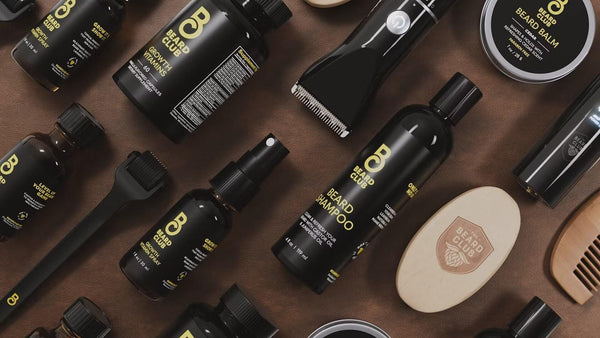Capri Shifts Strategy with Michael Kors Amid Market Pressures and Amazon Partnership
Table of Contents
- Key Highlights
- Introduction
- The Backdrop: Capri's Struggles and Market Changes
- A Shift to Mid-Tier Pricing
- Competitor Dynamics and Brand Distinction
- The Future: Navigating Challenges Ahead
- Conclusion
- FAQ
Key Highlights
- Capri Holdings plans to reposition Michael Kors by introducing lower prices and partnering with Amazon.
- The strategy follows the $1.4 billion sale of Versace to Prada and a series of revenue declines for Capri.
- Critics warn that selling through Amazon could dilute the brand's luxury perception, despite potential for increased sales volume.
Introduction
As the luxury fashion landscape evolves, brands face mounting pressures to remain relevant amidst changing consumer preferences. For Michael Kors, a brand long synonymous with American luxury, the reality is stark: Capri Holdings, its parent company, must adapt or risk significant decline. Recent developments, including a strategic pivot toward lower pricing and an unprecedented partnership with Amazon, signal a bold new direction for Michael Kors. This shift reflects not only Capri's challenges after the high-profile sale of Versace but also a broader transformation within the fashion retail sector.
In this article, we will explore Capri’s strategic decisions, the implications of its partnership with Amazon, and the potential for Michael Kors to regain its footing in the competitive luxury market.
The Backdrop: Capri's Struggles and Market Changes
Capri Holdings emerged as a significant player in the luxury market after acquiring Versace in 2018 for $2.2 billion, alongside the purchase of the high-fashion footwear brand Jimmy Choo. However, as of April 2025, Capri has displayed nearly ten consecutive quarters of declining revenues, primarily due to fierce competition and changing consumer tastes favoring casual footwear options over traditional luxury items.
The fashion retail landscape has seen a marked shift, as evidenced by the rise of casual wear and the casualization of luxury, wherein luxury brands increasingly blend high-end fashion with streetwear and more accessible pricing. The sale of Versace to Prada for $1.4 billion exemplifies the volatility and strategic recalibrations happening at the top tiers of fashion.
The Impact of Economic Factors
Capri’s re-evaluation comes at a time of increasing economic tension, including tariffs instituted by the U.S. government. The majority of Michael Kors products are manufactured in Asia, making them susceptible to price hikes due to tariffs. This economic pressure further complicates Capri's ability to maintain its price points and profitability in a market grappling with inflation and shifts in consumer spending behavior.
A Shift to Mid-Tier Pricing
In a recent earnings call, Capri's Chief Executive Officer John Idol discussed the strategic pivot towards mid-tier pricing. The brand’s attempt to elevate Michael Kors' price points too quickly has led to increased scrutiny regarding whether these higher prices resonate with consumers.
Idol emphasized that the new approach will focus on:
- Revamping pricing architecture: This involves aligning with historical pricing levels to reconnect with consumers who may perceive the brand as overpriced.
- Leveraging agility in inventory management: As part of this strategy, Capri aims to optimize its inventory turnover, especially with seasonal stock.
The Implications of Selling through Amazon
In March 2025, Capri launched its first official Michael Kors storefront on Amazon, marking a significant departure from traditional luxury sales channels. While partnering with the e-commerce giant allows Capri to reach a broader audience and drive volume, experts caution that it may also dilute the brand's upscale image.
Angeli Gianchandani, an adjunct instructor at New York University, pointed out that while this partnership may provide an outlet to sell excess inventory effectively, it risks undermining the brand's prestige. Michael Kors products previously available for under $50 to over $3,000 now have price points on Amazon ranging from $59 to $400.
By embracing a platform so linked to discount and volume sales, Capri is banking on the idea that increased accessibility will translate into higher overall sales. According to Jamie Meyers, a securities analyst at Laffer Tengler Investments, this move makes strategic sense, especially as companies attempt to mitigate excess inventory challenges.
Competitor Dynamics and Brand Distinction
The luxury market has become a battle ground, particularly with brands like Prada and LVMH continuing to expand their influence. Analysts have noted that luxury brands face difficulty in competing with emerging mid-tier brands that offer high-quality products at more accessible prices.
Capri's decision to sell through Amazon has prompted discussions about brand associations with luxury. Morningstar analyst David Swartz articulated that while Prada sits firmly in the luxury domain, Michael Kors operates more in the mid-tier space as an established American handbag maker. Thus, Capri's real challenge lies in distinguishing its offerings while remaining competitive against both local American brands like Coach and international luxury houses.
Consumer Expectations and Heritage Focus
Market analysts advocate for a measured approach that emphasizes the heritage of the Michael Kors brand while redefining its place in fashion. This could involve:
- Marketing that focuses on heritage: Revitalizing the brand narrative to remind consumers of its legacy and storytelling could create stronger emotional connections.
- Reassessing product lines: By offering basic pieces alongside luxury options, Capri aims to accommodate a more diverse customer base.
The Future: Navigating Challenges Ahead
As Capri Holdings navigates this critical juncture, several key factors will determine its success:
- Brand Image Management: Maintaining Michael Kors’ luxury image while simultaneously appealing to a budget-conscious consumer demographic will require a deft balancing act.
- Supply Chain Optimization: Addressing potential tariff-related price increases by sourcing materials or manufacturing closer to their primary markets could also play a significant role in investor confidence and customer perception.
- Innovation in Product Offerings: Emphasizing trends while remaining true to the brand’s identity will be essential as consumers increasingly seek brands that provide unique, quality experiences.
Conclusion
Capri Holdings is taking bold steps to revitalize the Michael Kors brand amid challenging market realities. By lowering prices and leveraging new sales channels like Amazon, the company hopes to increase accessibility to the previously luxury-reputed brand. Whether this strategic shift can successfully balance volume and prestige—and significantly turn around the faltering sales of Michael Kors—remains to be seen.
As Capri embarks on this new strategy, industry watchers will be closely observing the response from both consumers and competitors in a market that is fast-changing and fiercely competitive.
FAQ
What prompted Capri Holdings to lower prices for Michael Kors?
Capri Holdings is responding to nearly a decade of declining revenues for Michael Kors, coupled with consumer preference for more accessible luxury products. The partnership with Amazon is viewed as part of a strategy to reach a wider audience.
How does selling on Amazon affect Michael Kors’ luxury status?
Experts warn that selling through Amazon could dilute the luxury perception of Michael Kors, which traditionally relied on exclusivity and high-end image. However, it could also help clear excess inventory and boost sales volume.
What economic challenges is Capri facing?
Capri Holdings faces economic pressures from U.S. tariffs on products manufactured in Asia, which could affect pricing and profitability. The company must navigate these factors while trying to remain competitive in a challenging retail landscape.
How has consumer behavior towards luxury brands changed recently?
There has been a shift towards casual and functional luxury, with consumers favoring mid-tier options and brands that provide high-quality products at accessible prices. This shift influences how luxury brands set their pricing and market their products.
What strategies might Capri employ to enhance the Michael Kors brand?
Capri is likely to focus on marketing that emphasizes Michael Kors’ heritage, assess pricing strategies, and adapt product offerings to engage consumers while maintaining a distinct brand identity amidst evolving market trends.
POWER your ecommerce with our weekly insights and updates!
Stay aligned on what's happening in the commerce world
Email Address
Handpicked for You

08 September 2025 / Blog
How to Avoid Greenwashing: Rules, Real-World Examples, and a Practical Playbook for Honest Environmental Claims
Read more
08 September 2025 / Blog
Klaviyo 2025: How its AI-Driven CRM Transforms Shopify Email Marketing and the Customer Experience
Read more
08 September 2025 / Blog


